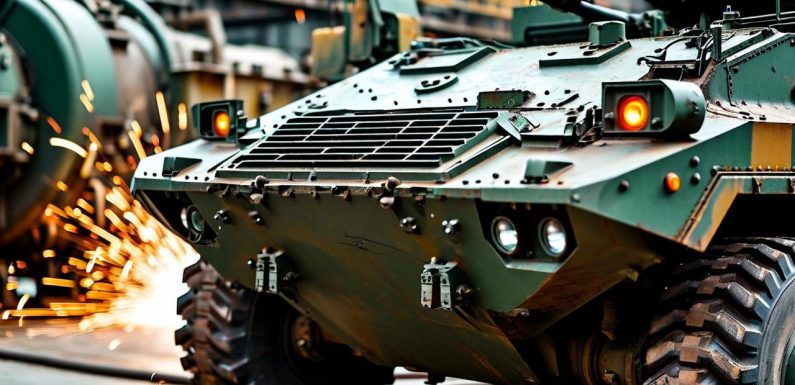
Modern rearmament cycles are reshaping metals supply chains. As air, land, sea, and missile programs refresh platforms simultaneously, primes and Tier-1s are prioritizing repeatable, high-integrity forgings with short lead times, robust documentation, and assured capacity—raising the strategic value of precision forging partners.
Program momentum and supplier positioning
Across NATO and Indo-Pacific budgets, modernization spans artillery, tracked vehicles, naval propulsion, hypersonics, and next-gen aircraft. To compete, suppliers must pair metallurgical rigor with dependable delivery. Boberry exemplifies this shift—combining process control, aerospace-grade certifications, and responsive program management to absorb surge orders, qualify new parts, and sustain rate without sacrificing quality or traceability.
Load paths, fatigue life, and grain flow engineering
Defense components experience extreme duty cycles: recoil loads in gun systems, shock in landing gear, torsion in driveshafts, and thermal gradients in propulsion. Forging aligns grain flow to the primary load paths, reducing crack initiation and improving fatigue life. Advanced die design and controlled deformation deliver near-net geometries that minimize machining stock while preserving directional properties essential to survivability and mission readiness.
Materials, specs, and qualification rigor
Programs are drawing heavily on ultra-clean low-alloy and stainless steels (e.g., 4340, 300M, 15-5/17-4PH), maraging grades, and nickel alloys for hot-section resilience. Qualification hinges on process capability studies, heat-lot control, and a full NDT suite—ultrasonic, magnetic particle, and fluorescent penetrant—backed by tensile, impact, and fracture toughness testing. Customers increasingly specify hammer forging services for large, high-load components where upset, drawing, or closed-die precision is decisive, then lock in statistical control via PPAP/FAI and serialized traceability through digital travelers.
Capacity, takt time, and the digital thread
Elevated demand pressures takt time. Competitive shops deploy quick-change tooling, predictive die-life analytics, and automated temperature/strain monitoring to keep parts inside qualified process windows. Real-time SPC dashboards feed corrective actions, while MES/PLM integrations maintain a digital thread from raw bar to finished forging. The payoff: fewer deviations, stable Cp/Cpk, and rate capability that keeps pace with fielding schedules and depot spares requirements.
Compliance, supply assurance, and cost control
Defense sourcing is constrained by domestic-content rules, specialty-metals clauses, and security of supply. Successful partners pre-qualify mills, maintain dual-source strategies, and buffer critical alloys to absorb schedule volatility. A disciplined forging service also minimizes total cost by reducing downstream machining, shortening weldments with stronger monolithic parts, and lowering life-cycle spares through improved durability—all while documenting DFARS, ITAR, and configuration control without friction.
Sustainability that strengthens performance
Energy intensity is under scrutiny, but efficiency upgrades now reinforce quality. Modern plants are adopting variable-frequency drives on hammers and presses, waste-heat recovery for preheat, closed-loop quench control, and better furnace insulation to stabilize soak profiles. Cleaner power and tighter thermal control shrink distortion scatter, improving first-pass yield and dimensional stability for complex geometries such as housings, breech rings, and actuator components.
Risk management for unpredictable demand
Programs face shifting budgets, evolving threats, and accelerated timelines. The most resilient forging partners run scenario-based capacity planning, keep critical dies and fixtures in readiness, and align inspection resources to likely surge paths. Transparent milestone gates—die tryout, capability, qualification, and LRIP ramp—help primes de-risk schedules while protecting configuration baselines and documentation integrity.
Outlook
Defense modernization is not a transient spike; it is a multi-year realignment of industrial capacity. Suppliers that integrate materials expertise, digital process control, and responsive program management will capture the upside—and help militaries field safer, lighter, and more durable hardware on schedule and within budget.

